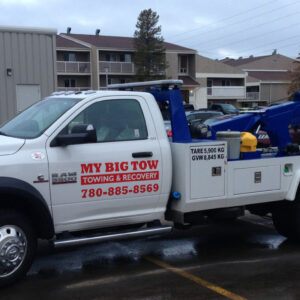Trees aren’t just a pretty addition to your yard—they’re an investment in your property’s value, curb appeal, and the environment. But just like any living thing, they need proper care to thrive. That’s where tree care service comes in. Whether you’re dealing with storm damage, disease, or just want to keep things tidy, hiring a professional can make all the difference.
In this guide, we’ll break down everything you need to know about tree care services—from what’s included to how to find the right company—so your trees stay strong, safe, and stunning year-round.
What Is Tree Care Service?
Tree care service refers to the professional maintenance and management of trees, from planting to pruning to removal. It’s all about promoting the health, structure, and longevity of trees while ensuring they pose no risk to people or property.
Certified arborists and tree care professionals have the knowledge and tools to provide specialized services that most homeowners can’t do safely on their own.
Benefits of Tree Care Services
-
🌳 Healthier Trees: Regular maintenance helps prevent disease, pests, and decay.
-
🏡 Improved Curb Appeal: A well-maintained landscape can boost your property value.
-
🔧 Preventative Maintenance: Avoid costly damage from falling limbs or unstable trees.
-
🌍 Environmental Impact: Healthy trees clean the air, reduce erosion, and support wildlife.
-
🛡️ Increased Safety: Removes hazardous branches and ensures trees aren’t a danger to your home.
Types of Tree Care Services
🌲 1. Tree Pruning & Trimming
Enhances the structure, appearance, and health of your trees by removing dead or overcrowded limbs.
🪵 2. Tree Removal
Necessary when trees are dead, diseased, or pose a threat to nearby structures or power lines.
🧪 3. Tree Health Diagnosis
Arborists check for signs of disease, pests, or environmental stress and offer targeted solutions.
🌱 4. Tree Planting
Expert advice on species selection and planting techniques to ensure long-term success.
🐛 5. Pest & Disease Management
Treatment and prevention for insects, fungi, and other common tree issues.
💧 6. Soil Care & Fertilization
Improves root health and promotes vigorous growth through proper nutrient management.
🔗 7. Cabling & Bracing
Provides structural support to weak or damaged trees to prevent limb or trunk failure.
When Should You Call a Tree Care Service?
-
Leaning or unstable trees
-
Cracked trunks or limbs
-
Branches too close to your roof or power lines
-
Unusual leaf discoloration or early leaf drop
-
Evidence of pests or fungus
-
After severe weather events
How Often Should You Use Tree Care Services?
Most experts recommend an annual checkup by a certified arborist. For pruning, the frequency depends on the species:
-
Deciduous trees: Every 2–3 years
-
Evergreens: As needed
-
Fruit trees: Annually for best yield
How to Choose the Right Tree Care Company
Here’s what to look for:
-
✅ Certified Arborists (ISA Certified)
-
✅ Insurance (Liability & Worker’s Comp)
-
✅ Clear, Written Estimates
-
✅ Good Online Reviews
-
✅ Local Experience
-
✅ Eco-Friendly Practices
Avoid companies that want full payment upfront or can’t provide references.
Tree Care Costs: What to Expect
| Service Type | Average Cost (USD) |
|---|---|
| Tree Pruning | $200 – $800 |
| Tree Removal | $300 – $2,000 |
| Health Assessment | $75 – $200 |
| Fertilization | $50 – $150 |
| Emergency Services | $500 – $2,500 |
Costs vary based on tree size, location, and complexity. Always get a few quotes before hiring.
Seasonal Tree Care Tips
🌸 Spring
-
Inspect for winter damage
-
Apply mulch
-
Begin fertilization
☀️ Summer
-
Monitor water needs
-
Check for pests
-
Light pruning if needed
🍂 Fall
-
Heavy pruning
-
Fertilize and mulch
-
Plant new trees
❄️ Winter
-
Tree wrapping for young trees
-
Remove snow from limbs
-
Prepare for spring pruning
Common Tree Problems and Solutions
| Problem | Solution |
|---|---|
| Dead limbs | Professional pruning |
| Yellowing leaves | Soil test & nutrient treatment |
| Insect damage | Pest control & tree sprays |
| Fungal infections | Fungicides & trimming |
| Root rot | Improve drainage, inspect soil |
DIY Tree Care Tips
Some things you can do yourself:
-
Water deeply once a week
-
Mulch around the base (but not against the trunk!)
-
Use compost or slow-release fertilizers
-
Inspect regularly for pests or changes
Leave high pruning, removals, or disease diagnosis to the pros.
Why Hire a Certified Arborist?
An arborist is trained in:
-
Tree biology and health
-
Proper pruning techniques
-
Disease and pest identification
-
Safe removal practices
-
Soil science and root care
Hiring a certified arborist means your trees are getting expert-level care—not guesswork.
Conclusion
Your trees are a valuable part of your property—and they deserve the same level of care you’d give your lawn, garden, or home exterior. With professional tree care service, you’re investing in beauty, safety, and long-term health. From planting to pruning, the right care today prevents big problems tomorrow.
FAQs
1. How do I know if a tree needs to be removed?
If it’s leaning, dead, severely diseased, or damaging nearby structures, it’s time to call in a pro.
2. How much does professional tree care cost?
Prices vary by service and tree size, but basic trimming usually starts around $200.
3. Is DIY tree pruning safe?
Only for small, low branches. Anything involving ladders, power tools, or large limbs should be left to the pros.
4. What is the best time of year for tree trimming?
Late winter to early spring is ideal for most trees, before new growth begins.
5. Can I plant a new tree where one was removed?
Yes, but it’s best to plant in a slightly different location and ensure the soil is healthy.








